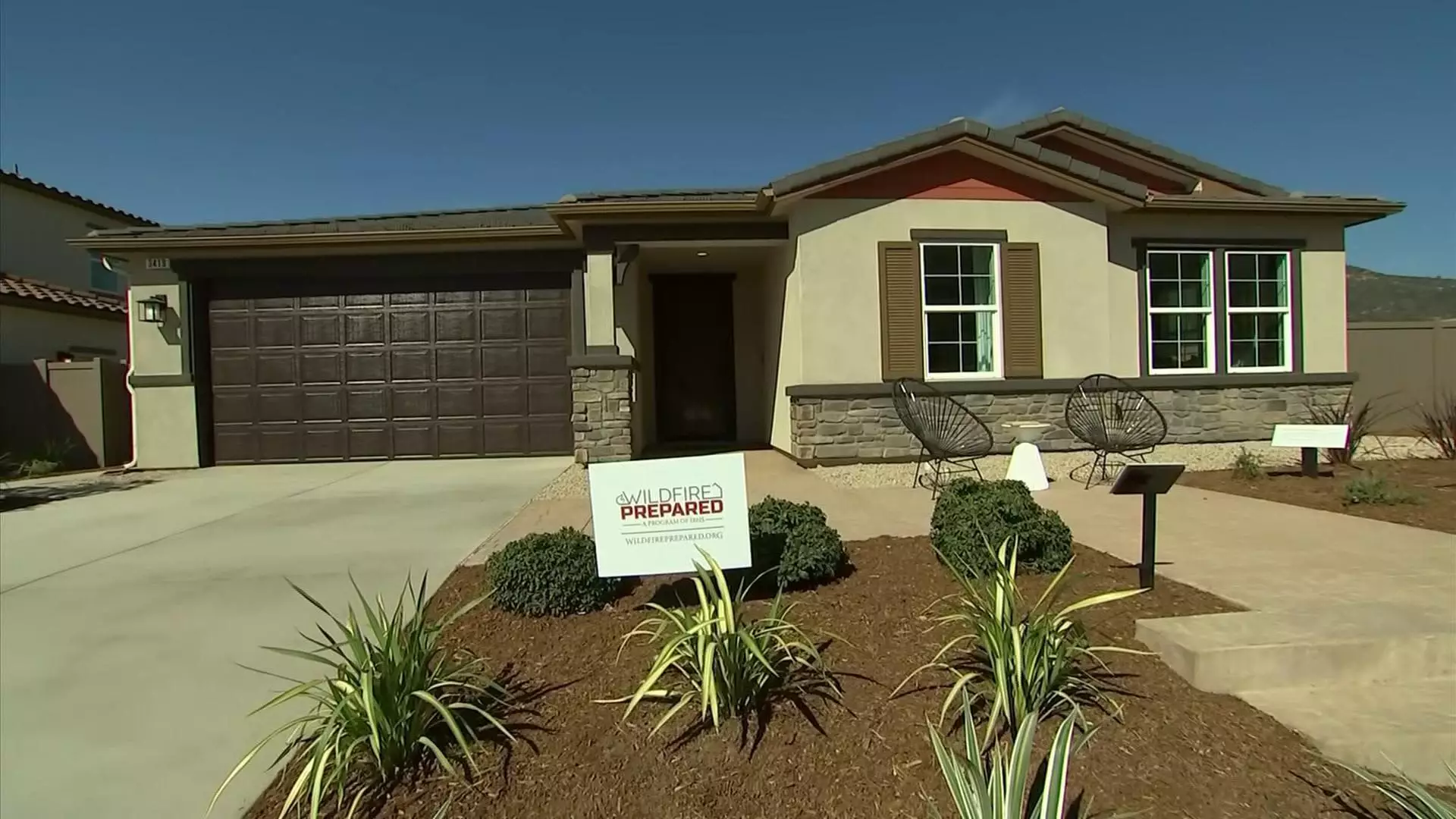As devastating wildfires continue to plague California, the construction landscape is undergoing a radical transformation. Gone are the days when homes were merely built for aesthetic appeal; now, the urgent necessity of safety takes precedence. The recent unveiling of KB Home’s first wildfire-resilient community in Escondido shines a light on this topic, emphasizing the demand for change in the wake of destruction. The community will host 64 single-family homes that comply with the stringent wildfire resilience standards developed by the Insurance Institute for Business & Home Safety (IBHS). This initiative isn’t just about building houses; it is about restoring faith in a system that has alarmingly let down homeowners during catastrophic events.
This merciless burn scar, left over from a series of wildfires in the Los Angeles area, has forced both builders and homeowners to confront the inconvenient truth that climate change isn’t just an abstract concern—it is a present-day reality. As droughts intensify and wildfires become more frequent and ferocious, the once-ignored urging for fire-resilient living is finally gaining attention. However, the question arises: Can you truly put a price on safety?
The Architectural Revolution
With climate-induced challenges looming large, KB Home’s new approach comes off as a bold but necessary pivot in the face of adversity. These homes fulfill a vital role by employing design tactics that prioritize survival over traditional notions of beauty. Featuring metal fences, covered gutters, and non-combustible siding, these residences create a buffer against wildfire threats, reflecting an architectural mindset that is rapidly evolving.
What is most commendable is the manner in which KB Home adapted its existing plans to incorporate state-of-the-art wildfire-resistant components—even after construction had already commenced. Regional General Manager Steve Ruffner told us that this collaboration with city officials was seamless. Their vested interest illustrated a deeper understanding of the community’s urgent needs. With three families already residing in the completed homes and more than 20 sold, a unique community spirit is beginning to take shape. However, the housing price tag ranging from $1 million to the low millions brings up a glaring issue: is this approach financially accessible for everyday Californians?
Economics vs. Safety: A Somber Reality
The drastic price of safety cannot be overlooked. While the general public might cheer this innovative step towards fire resilience, the reality remains that these homes cater to a narrow segment of the market. The emphasis on developing wildfire-resilient communities can only thrive if builders engage with the economics of the local populace. As climate change intensifies and insurance policies are rescinded, the need for affordable fire-safe housing becomes critical.
Ruffner mentions plans to identify affordable options for first-time buyers and movers, reflecting a genuine concern for community inclusivity. However, lofty expandables cannot mask the fact that while KB homes are revolutionary, they may simultaneously contribute to an increasingly polarized housing market, where safety is a privilege for the few rather than a right for all. Support for fire-resilient innovations should be championed, yet these lofty price tags only reinforce socio-economic divides.
The Inevitable Test of Time
While the entire industry looks on with bated breath, one cannot help but wonder about the long-term implications of this groundbreaking community. Can KB Home’s Escondido project serve as a beacon of hope, or will it be another fleeting experiment lost in the flames of capitalist ambition? Roy Wright, CEO of IBHS, reminds us that building fire-resistant homes isn’t a foolproof guarantee; rather, it’s a proactive step toward mitigating loss. The challenge lies not only in structurally fortifying homes but also in adapting the public’s culture around landscape design and zoning regulations.
Moreover, existing homeowners and local governments must also take up the mantle, enhancing the ecosystem surrounding these new developments. From implementing non-combustible landscaping practices to offering guidance on urban development, the broader community plays a pivotal role in bolstering resilience against wildfires.
Hope Amid the Ashes: A Call for Collective Action
Ultimately, KB Home’s wildfire-resilient community smartly underscores the urgent need for innovation in housing amidst an era of increasing climate volatility. These developments hold the potential for a well-designed future, providing vital safety measures while pushing the envelope in architectural standards. Still, we must remain vigilant to ensure that this model does not become an isolated incident for the affluent alone.
Everyone deserves a home that can withstand the fiercest of flames, exacting a model for housing that is as compassionate as it is fortifying. As Californians, we must unite to demand that the industry prioritizes equitable safety measures so that future generations can live not just in homes, but safe havens in the heart of wildfire country.

